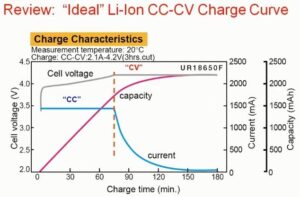As we all know, Automated Guided Vehicles (AGVs) are powered by batteries. Currently, most AGVs or automated guided forklifts use lithium batteries as their power source. AGV lithium batteries offer advantages such as high energy density, small size, light weight, environmental friendliness, and no memory effect. Meanwhile, temperature has a significant impact on AGV batteries—even a slight drop in temperature can lead to noticeable declines in battery capacity, charging efficiency, and service life. As winter arrives, to ensure lithium batteries perform at their best, proper maintenance of AGV batteries is essential. So, how should we maintain AGV batteries in winter? Let’s take a look!
01 Charge Indoors, Avoid Low Temperatures
In the overall cold conditions of winter, placing AGVs in a cool, dry, and safe indoor environment is critical. Ensure AGVs are kept away from hazardous items such as corrosive chemicals and dangerous mechanical equipment. Whenever possible, charge AGVs indoors to avoid low-temperature environments; it is not recommended to leave AGVs outdoors, as harsh outdoor conditions or excessively low temperatures may cause irreversible damage to battery cells.
To intuitively show how low temperatures affect the core performance of AGV lithium batteries, the table below summarizes changes in key battery indicators under common winter temperatures:
| Winter Ambient Temperature | Battery Capacity Retention Rate (vs. 25℃) | Charging Efficiency (vs. 25℃) | Cycle Life Attenuation Rate (per month) |
| 0℃ | 80% – 85% | 75% – 80% | 3% – 5% |
| -5℃ | 65% – 70% | 60% – 65% | 6% – 8% |
| -10℃ | 50% – 55% | 45% – 50% | 10% – 12% |
Note: Data is based on average performance of mainstream AGV lithium batteries (LiFePO4 type). Actual values may vary slightly by battery brand and age.
02 Charge as You Use, Avoid Deep Discharging and Overcharging
The lower the temperature, the lower the battery activity—this significantly reduces the charging and discharging efficiency of batteries for AGV trolleys and AGV forklifts. Such inefficiency can easily lead to over-discharging (voltage below 2.5V per cell) and overcharging (voltage above 3.65V per cell): minor cases may shorten the battery’s service life by 30% – 50%, while severe cases could trigger thermal runaway and fire accidents. Therefore, in winter, it is even more important to adopt a “shallow discharge and shallow charge” strategy. Additionally, batteries should be kept fully charged (state of charge, SOC ≥ 80%) at all times; discharged AGV lithium batteries (SOC ≤ 20%) should be recharged within 24 hours, as this helps extend their service life. Leaving AGVs idle with fully discharged batteries may cause permanent damage to the internal cells of lithium batteries.

The table below compares the effects of “shallow discharge & shallow charge” and “deep discharge & deep charge” on AGV lithium batteries in winter:
| Charging/Discharging Mode | Average Single Charging Time | Single Discharge Endurance (vs. Standard) | Monthly Cycle Life Attenuation | Safety Risk (Fire/Overheating) |
| Shallow Discharge & Shallow Charge (SOC: 20% – 80%) | 1.5 – 2 hours | 90% – 95% | 3% – 4% | Low (≤ 0.1%) |
| Deep Discharge & Deep Charge (SOC: 0% – 100%) | 3 – 3.5 hours | 80% – 85% | 8% – 10% | High (≥ 1.2%) |
03 Correct Charging Procedure
When charging, follow the correct procedure to avoid abnormal current fluctuations that damage batteries:
- Turn off the AGV’s main power switch to ensure no load is connected during charging;
- Connect the charging connector (male end) to the lithium battery’s charging port (female end) until a “click” sound is heard (indicating a secure connection);
- Plug the charger’s power cord into a grounded power outlet (confirm voltage matches the charger’s rated input, usually 220V AC);
- Turn on the charger’s power switch—wait for the indicator light to turn green (standby) then red (charging);
- After charging is complete (indicator light turns green again), first unplug the charger from the power outlet, then disconnect the charging connector from the battery.
Using the correct charging procedure is also a crucial part of battery maintenance, as improper operation (e.g., plugging in the power first before connecting the battery) may cause inrush current to damage the battery’s BMS (Battery Management System).
04 Use a Compatible Charging Pile
The charging pile for AGVs must be fully compatible with the lithium battery’s specifications (including rated voltage, charging current, and communication protocol). Using an incompatible charger may cause a short circuit when the charging current passes through the lithium battery, leading to lithium battery safety incidents such as swelling or fire. This is detrimental to AGV battery maintenance, poses safety risks, and threatens personal safety.

If your charger malfunctions (e.g., no indicator light, abnormal noise, or failure to charge), do not attempt to disassemble or repair it yourself. Instead, contact the AGV/battery official supplier to purchase a genuine charger. The table below lists common charger compatibility parameters for AGV lithium batteries:
| AGV Lithium Battery Type | Rated Voltage | Recommended Charging Current | Compatible Charger Communication Protocol |
| 24V LiFePO4 | 24V | 10A – 20A | CAN/RS485 |
| 48V LiFePO4 | 48V | 20A – 30A | CAN/RS485 |
| 72V LiFePO4 | 72V | 30A – 40A | CAN |
05 Maintenance Even When Idle
Batteries should be kept fully charged (SOC ≥ 90%) in winter to extend their service life, as low SOC in cold environments accelerates the formation of lithium plating on the battery’s anode. If AGVs are to be left idle for an extended period (e.g., during holiday shutdowns), it is best to charge the batteries once a month to prevent self-discharge of AGV lithium batteries (which could damage the battery structure and reduce the number of charge-discharge cycles).

The table below details the relationship between AGV idle time and battery state (without maintenance):
| AGV Idle Time | Battery Self-Discharge Rate | Risk of Cell Damage | Difficulty of Recharging |
| 1 week | 5% – 7% | Low (≤ 1%) | Easy (normal charging) |
| 2 weeks | 10% – 12% | Medium (3% – 5%) | Slightly difficult (needs 10-minute pre-charging) |
| 1 month | 18% – 20% | High (8% – 10%) | Difficult (needs 30-minute pre-charging) |
| 2 months | ≥ 30% | Very High (≥ 20%) | Possible irreversible damage (failure to recharge) |
If an AGV cannot be charged after being idle for a long time, you can first start the vehicle and drive it slowly with no load for a short while (about 15 minutes)—commonly known as “warming up the vehicle”—to increase the battery’s internal temperature to 5℃ – 10℃, then attempt to charge it. It is recommended that in cold weather, since battery activity will also decrease, you should not wait until the low-battery alert is triggered (usually when SOC ≤ 15%) to charge the battery; instead, try to charge it when SOC drops to 20% – 30%.



